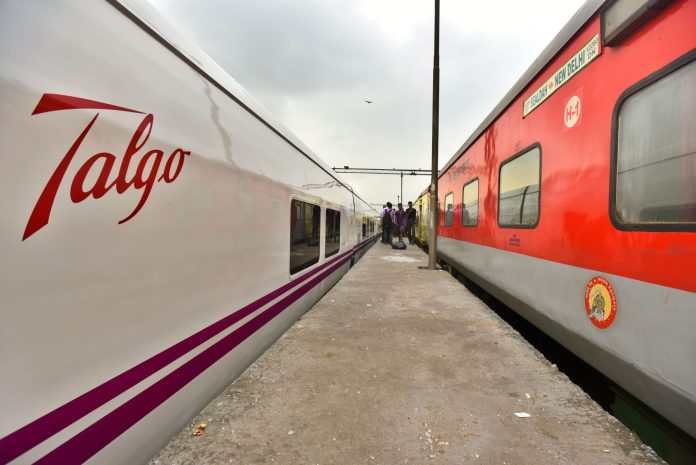Snapshot
The 160 kmph project, also known as Mission Raftar, is considered as a paradigm shift for rail network development as it would reduce the travelling time between busy destinations considerably.
While the Railways’ existing rolling stock is capable of running at 160 kmph, the lightweight coaches such as Talgo trains are better equipped to negotiate faster on curves with tilting technology.
In a fresh impetus to the ongoing project to increase train speed to 160 kmph in Delhi-Mumbai and Delhi-Howrah routes, Indian Railways is exploring the possibility of introducing lightweight modern rolling stock with tilting technology for the busy sections.
The 160 kmph project, also known as Mission Raftar, is considered as a paradigm shift for rail network development as it would reduce the travelling time between the busy destinations considerably.
While the Railways’ existing rolling stock is capable of running at 160 kmph, the lightweight coaches such as Talgo trains are better equipped to negotiate faster on curves with the tilting technology.
The Railways had already conducted successful trials of Talgo trains in Delhi-Mumbai sector on the existing tracks in 2016. The travel time of 16 hours was reduced to 12 hours between Delhi and Mumbai during the trial run.
Provisions are expected to be made for induction of light weight coaches in the next fiscal of 2022-23. There would be budgetary provisions for acquiring the modern rolling stock with tilting technology in the next budget, said a senior Railway Ministry official.
Currently, work is underway for the ambitious 160 kmph project, in both the routes.
Mission Raftar aims to reduce travel time on busy routes by running passenger-carrying trains at a maximum speed of 160 kmph. The 1,525-km long Delhi-Howrah and the 1,483-km long Delhi-Mumbai sections are being taken up under Mission Raftar to speed up train journeys on the routes.
Expected to be operational by March 2024, the ambitious project involves strengthening of the track and power supply system, signalling upgradation, elimination of level crossings, realignment of curves and fencing of the proposed route among others.
Recently, the Railways floated a tender for the upgradation of overhead equipment (OHE) and strengthening of power supply system on Delhi-Mumbai and Delhi-Kolkata routes.
Besides, preparations are afoot for other works involving electrical, mechanical, civil engineering, signal and telecom to speed up the implementation of the project approved by the Cabinet.
While the engineering department would strengthen the track, the mechanical wing would set up coach depots at Howrah, Delhi and Mumbai for the 160 kmph project.
Besides, it would install a fault detection system along the track required for high speed trains. There would also be fencing of the track, a must for semi-high speed corridors, as it prevents human or cattle crossings on the route and ensures higher speed and safety.
Before Covid-19, the Delhi-Howrah route was used by about 120 passenger trains and around 100 goods trains every day, while some 90 passenger services and an equal number of freight trains were running on Delhi-Mumbai corridor daily.
According to the feasibility study, the 160 kmph project is a remunerative project with both routes having high rates of return.
After Delhi-Mumbai and Delhi-Howrah routes, other busy routes of Howrah-Chennai, Delhi-Chennai and Chennai-Mumbai are likely to be taken up.


